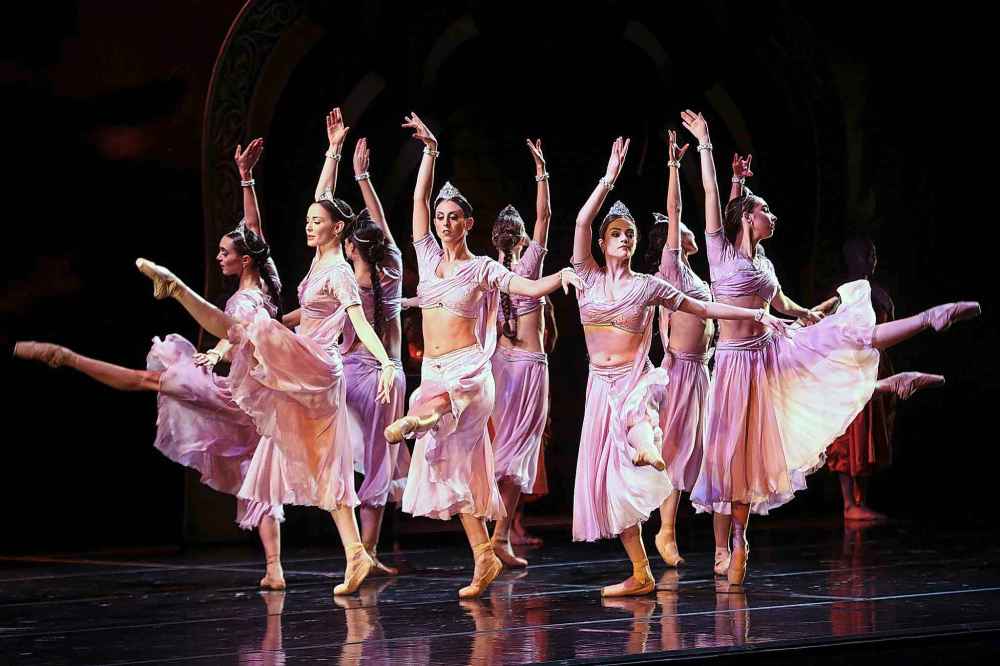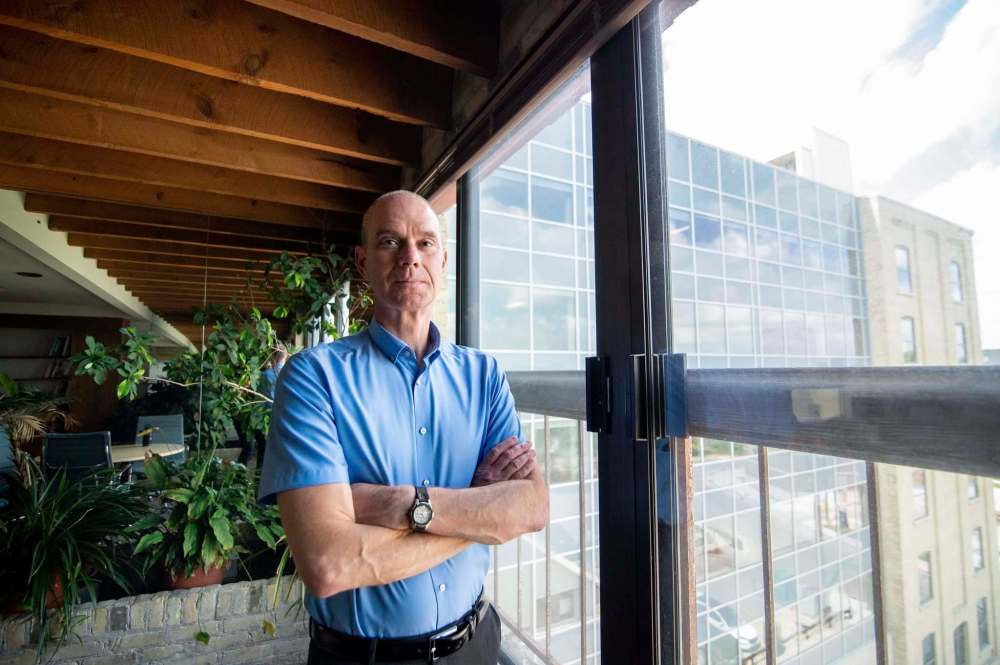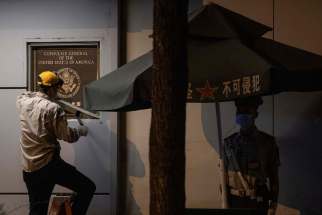The art of survival Arts groups focus on outlasting the financial fallout from the pandemic
Read this article for free:
or
Already have an account? Log in here »
To continue reading, please subscribe:
Monthly Digital Subscription
$1 per week for 24 weeks*
- Enjoy unlimited reading on winnipegfreepress.com
- Read the E-Edition, our digital replica newspaper
- Access News Break, our award-winning app
- Play interactive puzzles
*Billed as $4.00 plus GST every four weeks. After 24 weeks, price increases to the regular rate of $19.00 plus GST every four weeks. Offer available to new and qualified returning subscribers only. Cancel any time.
Monthly Digital Subscription
$4.75/week*
- Enjoy unlimited reading on winnipegfreepress.com
- Read the E-Edition, our digital replica newspaper
- Access News Break, our award-winning app
- Play interactive puzzles
*Billed as $19 plus GST every four weeks. Cancel any time.
To continue reading, please subscribe:
Add Winnipeg Free Press access to your Brandon Sun subscription for only
$1 for the first 4 weeks*
*$1 will be added to your next bill. After your 4 weeks access is complete your rate will increase by $0.00 a X percent off the regular rate.
Read unlimited articles for free today:
or
Already have an account? Log in here »
Hey there, time traveller!
This article was published 28/07/2020 (1896 days ago), so information in it may no longer be current.
Helping arts groups survive the COVID-19 pandemic has become the top priority for the Winnipeg Arts Council.
“We’re just in a process of preparing our 2021 corporate plan and request to the city and we have one main goal, and that is sustaining the arts in Winnipeg for 2021,” says Carol Phillips, who has been the Winnipeg Arts Council’s executive director since 2006. “That’s the only thing that matters at this point. We are there to support the arts and sustain them at this time of crisis and help them get to the other side.
“They have to have a chance to get back on their feet, and that’s what we want to help them do. The arts need every penny.”

There’s a big problem, though. The city cut the arts council’s budget by 10 per cent in its 2020 budget, and Phillips expects the new lower funding level to remain that way for the next three years. That means the arts council will disburse $4.2 million in grants this year to individual artists and small community arts groups, as well as larger organizations in the city, such as the Winnipeg Symphony Orchestra, Manitoba Opera, the Royal Manitoba Theatre Centre and the Royal Winnipeg Ballet.
It also has no special fund for pandemic-related grants, unlike the Winnipeg Foundation, which on July 16 announced it will hand out $8.9 million in pandemic stabilization grants to 279 Winnipeg charities, including dozens of city arts groups.
“We were under-resourced as it is, and have been arguing that for many years, no matter who the governing authority might be. Nevertheless, we’re making the best of the situation,” Phillips says.
“We were under-resourced as it is, and have been arguing that for many years, no matter who the governing authority might be. Nevertheless, we’re making the best of the situation.” – Winnipeg Arts Council’s executive director Carol Phillips
Another problem larger arts groups face is the way they saw audiences — and for some, large portions of their 2019-2020 seasons — vanish, owing to the onset of COVID-19. Not only do these companies rely on box-office receipts, the essence of the performing arts is to entertain, says Randy Joynt, the executive director of the Manitoba Arts Council.
“We’d seen some uncertainty for the first part of the pandemic for the arts community generally, and I think it’s true the arts were the first to put the brakes on,” says Joynt, who took over the Manitoba Arts Council’s top job in the summer of 2019. “How are we going to continue to bring people together and share art?
“The performing arts are in tough I would say because we’re still working out how we’re going to safely gather artists on stage, actors or dancers or musicians and then, of course, bringing people into enclosed spaces. That’s still a work in progress.”

The Manitoba Arts Council, which will distribute about $11 million in grants on behalf of the province in 2020, has repurposed an old program, Connecting at a Distance, to help some of the province’s artists adapt to pandemic restrictions, Joynt says.
“This provided some funds for artists to continue to create but to present work in a safe manner, physically distancing,” he says. “The creative spark never stops, so this was an opportunity for artists to continue that.
“Even larger groups are being innovative with the way they’re functioning. The folks that are organizing… they’re being incredibly responsive. They’re making Plan A, Plan B and Plan C and then you have back-up plans to all those.”
Arts groups have also been responding to the death of George Floyd, a Black man from Minneapolis who was killed in an confrontation with police officers, caused a surge of protests and rallies, including one on June 5 that took place at the steps of the Manitoba legislature as about 15,000 people showed their support for racial justice and equality. The involved officers have been charged in Floyd’s death.

Artists around the world have heard and supported the demonstrations, and Manitoba’s arts groups must react, Joynt says.
“If we look at this moment of time, with COVID-19 and then the Black Lives Matter movement, I think this is going to be looked back on in history as a turning point,” Joynt says. “Certainly at the Manitoba Arts Council, we’re talking about it and it really is a question of equity.
Who they are
Randy Joynt: He took over the reins at the Manitoba Arts Council in the summer of 2019. He comes from a dance background. Joynt began as a youngster as part of a Ukrainian dancing troupe in Meacham, Sask., east of Saskatoon, before moving to Winnipeg to attend the Royal Winnipeg Ballet School and the School of Contemporary Dancers.
Randy Joynt: He took over the reins at the Manitoba Arts Council in the summer of 2019. He comes from a dance background. Joynt began as a youngster as part of a Ukrainian dancing troupe in Meacham, Sask., east of Saskatoon, before moving to Winnipeg to attend the Royal Winnipeg Ballet School and the School of Contemporary Dancers.
He went on to have a career in contemporary dance but learned about arts administration while forming a dance company, Trip Dance, with his partner, Karen Kuzak.
That eventually led to an eight-year tenure heading Artspace in Winnipeg and working at a theatre society in Victoria, B.C., before joining the Manitoba Arts Council.
“The arts is ever-changing and ever-evolving, so it’s not a boring job, I can tell you that,” he says. “This was a dream job for me. I’ve always been interested in arts policy and the behind-the-scenes, how arts contributes to society.”
Carol Phillips: She comes from a visual-art background and arrived in Winnipeg in 1985 to be the director of the Winnipeg Art Gallery.
From 1992 to 2000, she was the vice-president and director for the Banff Centre for the Arts and in 2001 she returned to Winnipeg to head the Plug In Institute for Contemporary Art. She also oversaw the management of Canada’s representation to the Venice Bienniale that year.
She became the Winnipeg Arts Council’s executive director in 2006.
The organization has concentrated on making sure its programs and funding are available to everybody, Joynt says. “We do some strong work on this already… but we know we have some more work here, so this is an area of focus for us right now.”
Phillips echoes those concerns, adding the Winnipeg Arts Council tries to address diversity with its juries, which ultimately decide whether a grant application receives council funding, Phillips says.
“We have always practised inclusivity, diversity and equity,” she says. “On those juries we always have representation of Indigenous, people of colour. We have to have discipline expertise and gender balance. We will fund an artist and work with an artist to be successful.”
Since 2004, the Winnipeg Arts Council has also overseen public art in the city, including notable installations such as Bloody Saturday, in front of the Pantages Playhouse Theatre, which depicts a violent scene from the 1919 Winnipeg General Strike, and most recently, several works placed along the Southwest Transitway line.
“If this pandemic has exposed anything, if you think back to the quarantine period, how did we get through that? We got through it with the arts, we really did.” – Executive director of the Manitoba Arts Council Randy Joynt
The Public Art Program has also been hit by the city’s cutbacks. Its budget was $500,000 in 2004 but that will be down to $125,000 in 2021, Phillips says.
“There have been so many wonderful artworks that have been created through the Public Art Program, but of course that has been slashed as well, so we’re in a maintenance mode,” she says.
The future of arts, and funding in Manitoba and Winnipeg is unclear, but the pandemic showed how important art is to the world, Joynt says.
“If this pandemic has exposed anything, if you think back to the quarantine period, how did we get through that?” he asks. “We got through it with the arts, we really did. Online presentations or books or music. I think we all came out of that realizing the importance of the arts.”
alan.small@freepress.mb.ca
Twitter:@AlanDSmall

Alan Small
Reporter
Alan Small was a journalist at the Free Press for more than 22 years in a variety of roles, the last being a reporter in the Arts and Life section.
Our newsroom depends on a growing audience of readers to power our journalism. If you are not a paid reader, please consider becoming a subscriber.
Our newsroom depends on its audience of readers to power our journalism. Thank you for your support.







